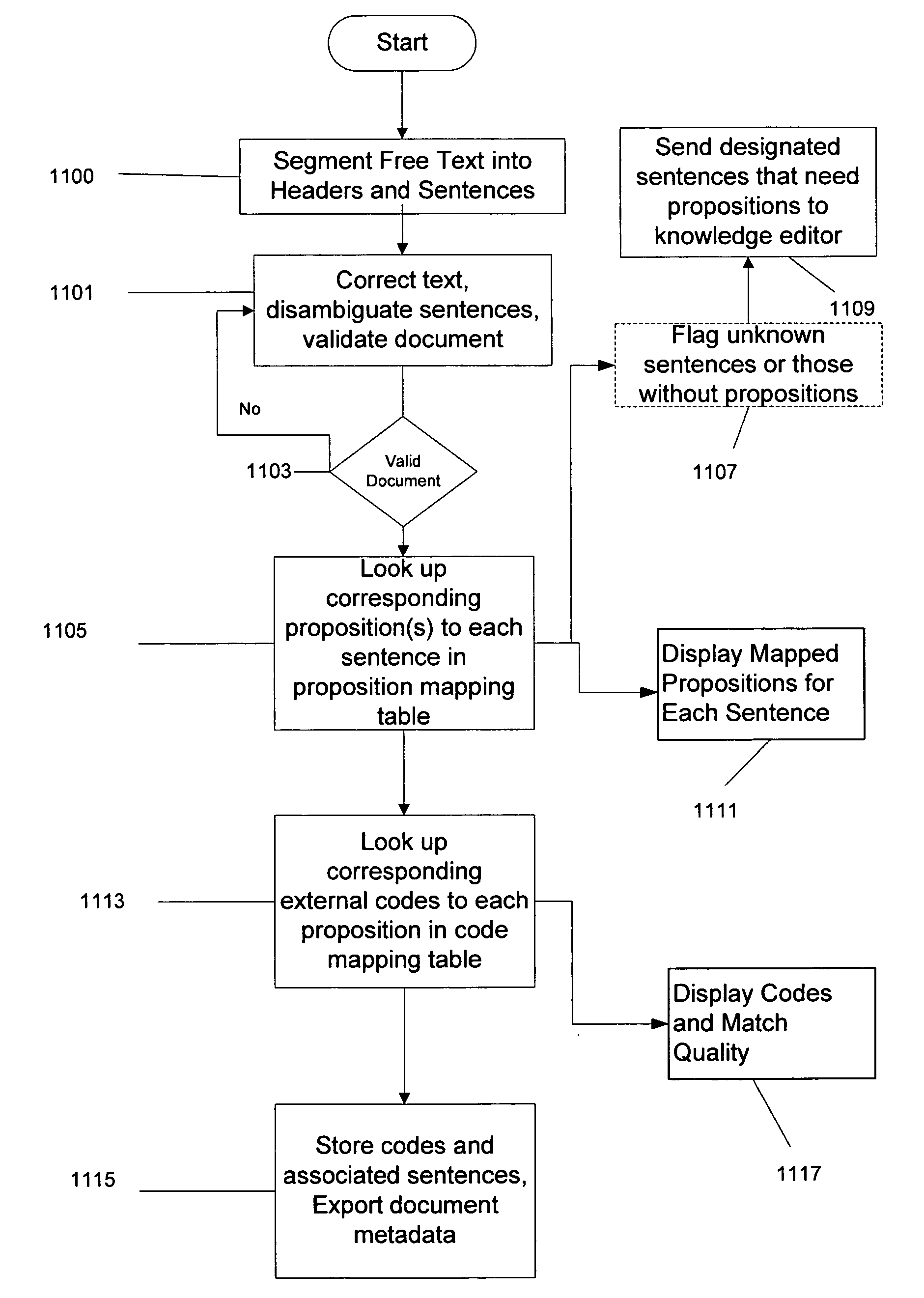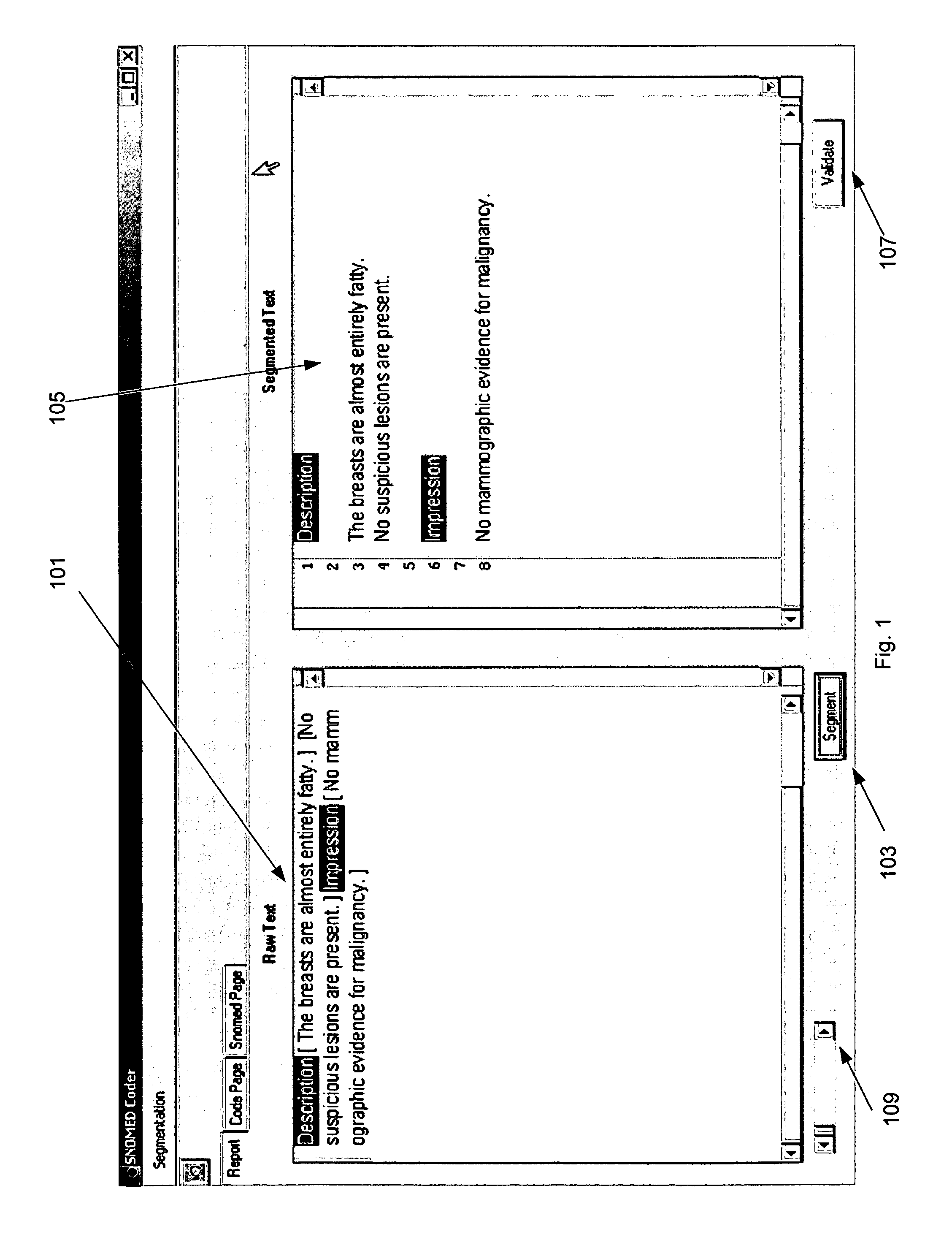Process and system for high precision coding of free text documents against a standard lexicon
a technology of free text and lexicon, applied in the field of high-precision coding of free text documents, can solve the problems of limited extraction ability, inability to semantically process all free text in a medical document, and 85% of this information is in free text, and achieves the effect of minimal effor
- Summary
- Abstract
- Description
- Claims
- Application Information
AI Technical Summary
Benefits of technology
Problems solved by technology
Method used
Image
Examples
Embodiment Construction
[0048]While the present invention is contemplated for use in a wide variety of application domains, it is described herein, primarily in the context of a medical information coding system in radiology for the purpose of illustration only.
[0049]The present invention employs several knowledge base components described in application Ser. No. 10 / 844,912 titled, “Process for constructing a semantic knowledge base using a document corpus, herein referred to as “corpus based knowledge construction”. Briefly, that invention describes the steps for mapping the set S of sentences in a corpus of related documents, to the set M, of unique meanings or propositions in a knowledge domain to form a semantic knowledge base. A knowledge domain is the semantic knowledge contained in a large corpus of related documents from the domain, for example the semantic knowledge in 500,000 radiology reports. The fundamental unit asserted in the semantic knowledge base is a proposition expressed as a declarativ...
PUM
 Login to View More
Login to View More Abstract
Description
Claims
Application Information
 Login to View More
Login to View More - R&D
- Intellectual Property
- Life Sciences
- Materials
- Tech Scout
- Unparalleled Data Quality
- Higher Quality Content
- 60% Fewer Hallucinations
Browse by: Latest US Patents, China's latest patents, Technical Efficacy Thesaurus, Application Domain, Technology Topic, Popular Technical Reports.
© 2025 PatSnap. All rights reserved.Legal|Privacy policy|Modern Slavery Act Transparency Statement|Sitemap|About US| Contact US: help@patsnap.com



